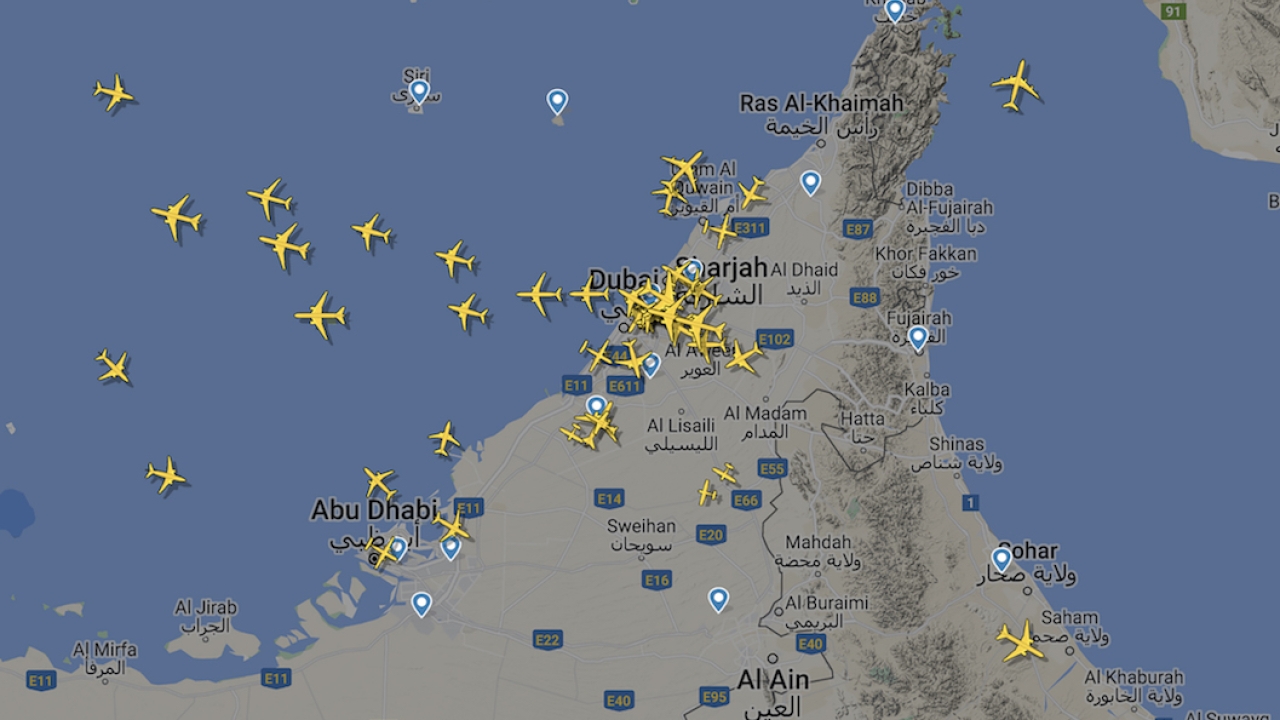ATC revolution boosts traffic flow in Middle East

For the past decade, the success of the three major Gulf airlines – Etihad Airways, Emirates Airline and Qatar Airways – has had the side-effect of adding considerably to the congestion of airspace in the region.
As the airlines’ fleets have mushroomed, so the area’s air traffic controllers have had to fit more and more aircraft into a finite space.
While the hardworking controllers have coped admirably so far, average delay due to traffic congestion is now 29 minutes and this figure is forecast to double to 59 minutes per flight in the next few years unless something is done to alleviate the situation.
On December 7 2017, the UAE’s General Civil Aviation Authority (GCAA) implemented what it describes as one of the largest airspace changes ever seen in the region.
That date saw the completion of the UAE airspace restructuring project (ARP), which transformed the Emirates flight information region into the world’s first airspace structure to be completely based on performance-based navigation (PBN) with a navigation specification of RNAV-1.
PBN is a system that uses satellites and computerised on-board systems. This offers considerable advantages over traditional sensor-specific navigation based largely on fixed, ground-based beacons that guide aircraft along published routes via waypoints defined by those beacons.
Primarily, the airspace change aims to increase the UAE’s airspace capacity to meet forecast air traffic demand for 2022, as well as increase access to all the UAE’s airports and generally improve efficiency for both customers and air navigation service providers.
It will also reduce the environmental impact of the region’s increasing air traffic by allowing it to move more efficiently.
The restructuring project was the culmination of several years of analysis, development and collaboration across the UAE’s aviation community to develop one of the world’s most advanced navigational systems.
“The implementation of the ARP is not only impressive from a technical perspective,” said GCAA director-general Saif Al Suwaidi. “To achieve collaboration on such a large-scale change required teams of project management and technical experts with dedicated representation from the six UAE air navigation service providers (GCAA, dans, Abu Dhabi ANS, Fujairah, Ras Al Khaimah and Sharjah), 15 core agencies (including the UAE national airlines, UAE airport authorities, UAE military, regulatory representation, IATA and the National Center of Meteorology and Seismology) and the five surrounding international air traffic service providers.
“Implementation of the UAE ARP has demonstrated our capability to safely meet the capacity requirements for the forecast 2020 air traffic demand and beyond, but also to deliver environmental efficiency and fuel savings exceeding $15 million to airline customers within the first year after implementation,” said Al Suwaidi.
“These sustainable annual fuel savings further translate to around 100,000 metric tonnes of C02, supporting a significant contribution towards the UAE’s environmental policy and responsibilities towards ‘greener’ aviation.”
The project got under way in 2013 and a major milestone was achieved in July 2016 with the integration and implementation phase, which saw international consultants help ensure the transformation of the ARP concepts into a workable solution.
Overall, the project required more than 120,000 working hours to bring to fruition, said the chairman of the project steering group, Ahmed Al Jallaf. Multiple ‘fast-time’ and real-time simulations were staged in the UAE, Italy and the UK to validate the design of the revised airspace network. The ARP also required more than 250 air traffic controllers to undertake simulation and theoretical training to allow them to handle the new system.
Additionally, more than 200 instrument flight procedures had to be redesigned and 30 new airways had to be incorporated.
As well as handling planned traffic increases out to 2022, the new system is designed to provide a basis for ‘future-proofing’ the UAE’s airspace as far into the future as 2040. This will ensure that the expected traffic increases engendered by the expansion of Al Maktoum International and Abu Dhabi International Airport can be catered for.
It will also help ensure that aviation will continue to play a major role in the growth of the UAE’s economy for the foreseeable future.
Stay up to date
Subscribe to the free Times Aerospace newsletter and receive the latest content every week. We'll never share your email address.

